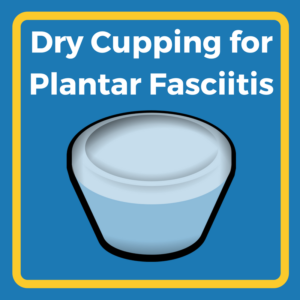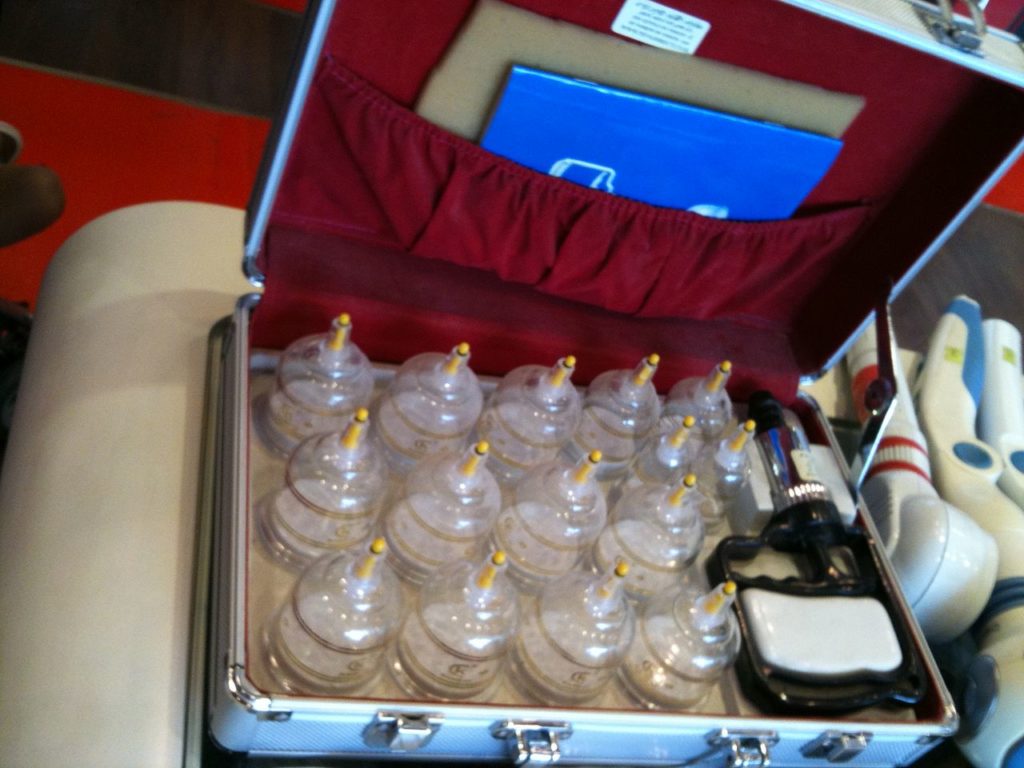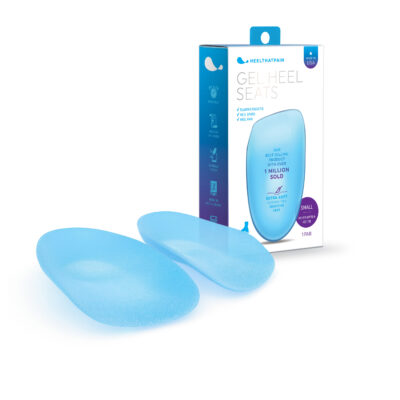 If you watched the Rio Olympics, you probably remember the sensation caused by the deep red circles seen on the backs and shoulders of many athletes.
If you watched the Rio Olympics, you probably remember the sensation caused by the deep red circles seen on the backs and shoulders of many athletes.
These circles, evidence of dry cupping, led to a renewed interest in the alternative therapy; however, it’s important to understand that dry cupping has been used by many cultures, for many thousands of years to treat pain, increase blood flow, loosen stiff muscles, and even improve degenerative disorders.
Because of its low cost and effectiveness at reducing pain, dry cupping has surged in popularity as a conservative alternative to medical intervention, especially in severe or very persistent cases of plantar fasciitis.
Thinking about giving dry cupping a try? Here’s what you need to know!
What Is Dry Cupping?
Dry cupping is a manual therapy that involves positioning a cup on the skin and creating a vacuum to apply negative pressure. This negative pressure increases blood flow to the area. Dry cupping can be done with either a heated cup that creates a vacuum as it cools, or a simple system involving a cup and a manual hand pump, which creates the negative pressure once the cup is applied. Dry cupping can either be done with a physical therapist or at home, using kits that may be purchased for a small amount (approximately $35).

Cups remain on the skin for between five and ten minutes, after which they are carefully removed. As the skin is raised through suction, increased blood flows through the cupped area, which can reduce pain as well as break up adhesions if they are present.
Dry cupping has been used to treat conditions like fibromyalgia, carpal tunnel syndrome, osteoarthritis, and chronic pain in the neck, back, and shoulders. Recently, dry cupping has also been studied as a potential treatment for plantar fasciitis.
Dry Cupping for Plantar Fasciitis
While numerous studies have been conducted on the effectiveness of dry cupping as a pain management therapy, most studies about dry cupping and plantar fasciitis specifically are still forthcoming. However, one recent study revealed a correlation between dry cupping and pain reduction for plantar fasciitis, particularly when combined with electrical stimulation therapy.
This study found that dry cupping, when combined with electrical stimulation therapy (such as TENS therapy), was very effective in significantly reducing plantar fasciitis pain for the majority of participants. Participants reported reduced overall pain, and reduced morning pain as a result of two sessions of dry cupping per week, for four weeks.
It can be helpful to think of dry cupping as the opposite of myofascial massage. Instead of applying positive pressure to the fascia by massaging the damaged tissue, dry cupping applies negative pressure to the plantar surface, heels, and calves, allowing more blood to circulate and help promote healing and loosen the muscles and ligaments in these areas.
Side Effects and Considerations for Dry Cupping

This file is licensed under the Creative Commons Attribution 4.0 International license via WellcomeImages.
Side effects of dry cupping are minimal and include temporary, raised red circles on the skin, slight swelling, and sometimes a mild pinching sensation as the vacuum applies negative pressure.
It’s important to apply the cups only to soft tissue, not bone. It’s also important not to leave the cups on the skin for extended periods to avoid skin damage or broken capillaries. Cupping isn’t recommended as a treatment for pregnant women, individuals with deep vein thrombosis, conditions that cause broken or irritated skin, or individuals with certain types of spreading cancers.
It’s also important to remember that cupping is best used in tandem with proven conservative treatments for plantar fasciitis, such as icing, stretching, weight loss, and orthotics made for plantar fasciitis. Experimenting with low-risk, conservative treatment methods while sticking with these basics can be a great way to find new and helpful pain-management techniques, and ultimately, healing.




Where can I purchase these dry cups? You quoted approximately $35 but no info on where to buy them.
I ordered our set from Amazon.
What size cups work for treating the feet?
Many thanks for your article on dry cupping as the solution to plantar fasciitis which I was from suffering from for the past few months. I shall give a try and keep you posted.
Many thanks.